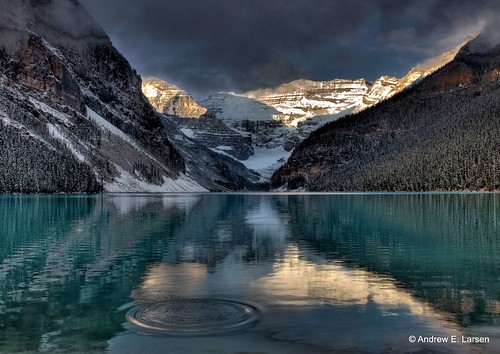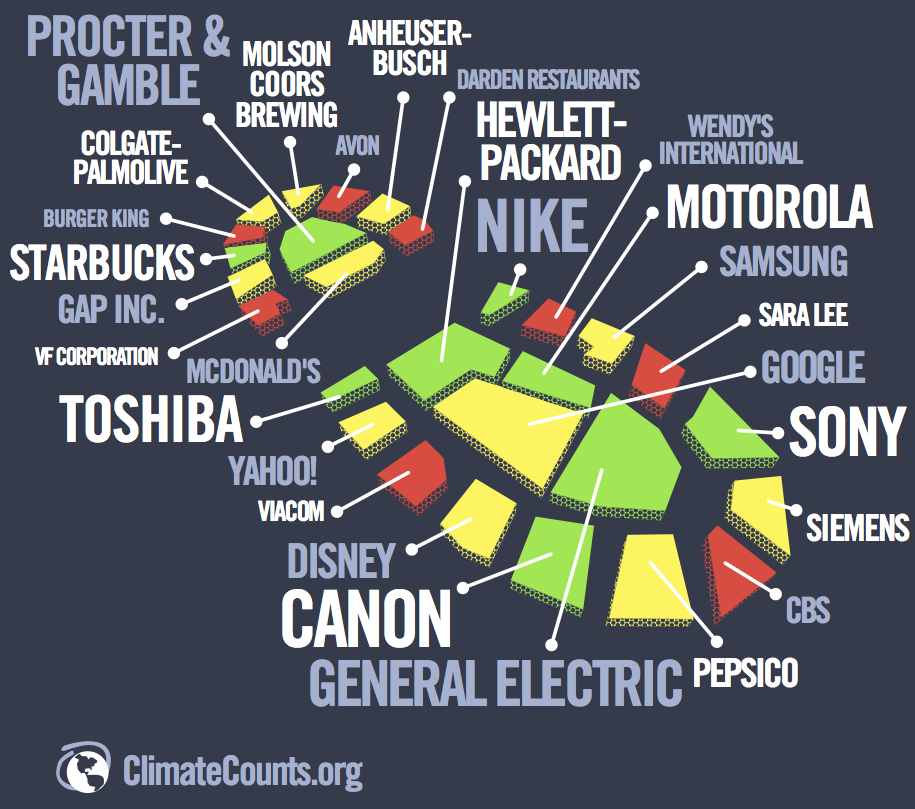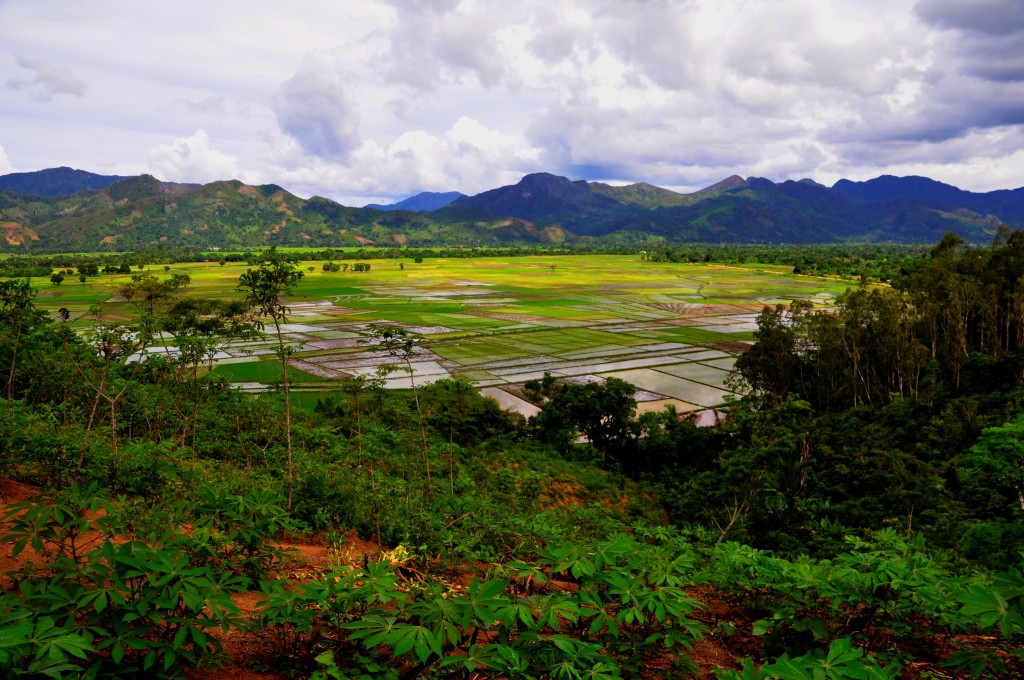Score card confirms airlines and fast food companies as anti-climate
Grabbing that burger in the departure lounge before boarding your flight has just gotten worse. Farming the meat on your bun, and the emissions of your plane are among the top climate killers – that much was known. But now a new score card reveals that the companies in the business are not much better when it comes to their own climate credentials.
With little or no visible efforts to curb their carbon footprint, Wendy’s and Burger King are among those placed lowest in ClimateCount’s ranking of corporate commitment to climate protection around the world. McDonald’s, although placed marginally higher, outshines all others only by registering the largest annual drop in point score of any of the 145 companies surveyed.
Airlines do fare better on average. But particularly US airlines are among the most die-hart opponents of public policy moves towards climate protection.
Here are all the details and the ranking in the ClimateCounts.org scorecard flipbook
Fracking: The Controversy (Part 3)
Natural gas development through hydraulic fracturing stands for job creation, energy security and has a long and clear record of safety. At least that’s what Bruce Vincent, president of the US-based oil and gas company Swift Energy and former IPAA chairman, says. If someone like Bruce Vincent makes statements like this, it adds authority to the subject: The IPAA is the American oil and gas association and it’s very influential. According to Bruce Vincent, the gas industry simply needs to educate people better about the facts:
The role fracking will play in creating jobs in the future appears to be a little less promising if we listen to Michael Feroli, Chef U.S. Economist at JPMorgan Chase & Co. (JPM):
“It is definitely a positive for the economy, but one can overstate how much of a positive. Oil and gas production account for about 1 percent of gross domestic products, and will have a limited impact on the country’s unemployment.”
At least fracking might be the cleanest way of burning fossil fuel – but then why is analyst Sue Tierney, energy consultant at Analysis Group, publicly worrying about irreversible changes within the ecosystem in the nearby future:
“Fifty years from now, are we really going to be wondering if we really screwed up because we went on this big gas boom? You really wouldn’t want to be messing that up.”
The american investigative journalist Jeff Goodell has his own response to that question:
“It’s not only toxic – it’s driven by a right-wing billionaire who profits more from flipping land than drilling for gas.”
In a detailed article in the Rolling Stone magazine in the March 2012 issue, he claims that
“Fracking, it turns out, is about producing cheap energy the same way the mortgage crisis was about helping realize the dreams of middle-class homeowners.”
His profound research, which is focused mainly on the business of the gas U.S. company Chesapeake Energy, raises – if it should turn out to be justifiable – a lot of questions about the main motives behind fracking:
“For Chesapeake, the primary profit in fracking comes not from selling the gas itself, but from buying and flipping the land that contains the gas. The company is now the largest leaseholder in the United States, owning the drilling rights to some 15 million acres – an area more than twice the size of Maryland. McClendon has financed this land grab with junk bonds and complex partnerships and future production deals, creating a highly leveraged, deeply indebted company that has more in common with Enron than ExxonMobil.”
Jeff Goodell‘s opinion about the CEO of Cheasepeake Energy is clear:
“Like generations of energy kingpins before him, it would seem, McClendon’s primary goal is not to solve America’s energy problems, but to build a pipeline directly from your wallet into his.”
But even if we put these claims aside for the time being, tthe doubts about fracking and its effects on the environment are just as serious. Let’s have a look at it.
There are allegedly 65 chemicals that could be components of the fracking fluids used by shale gas drillers: Benzene, glycol-ethers, toluene, 2-(2-methoxyethoxy) ethanol, and nonylphenols. All of those chemicals have been linked to health disorders if human exposure is too high.
Therefore, contaminated groundwater is one of the main issues that has raised safety concerns.
Also, the subject of flowback, meaning the waste of water, has been much discussed.
Dr. Anthony Ingraffea, D. C. Baum Professor of Engineering at the American Cornell University, has researched fracture mechanics for more than 30 years and stresses that drilling and hydraulic fracturing
“can liberate biogenic natural gas into a fresh water aquifer.”
Fresh-water Aquifers that provide sustainable groundwater some 100 meters under the earth surface to urban areas and for agricultural irrigation are critically important in human habitation and agriculture. Many villages and even large cities draw their water supply from wells in aquifers.
Read more about it and why fracking is under suspicion to cause a global water crisis in the compact booklet of the American NGO Food and Water Watch.
Earthquakes like the one that happened in the UK in 2011 could be a direct consequence of the underground explosions from the hydraulic fracturing process. Cuadrilla Resources, the UK company who has been associated with the earthquake stated in a press release:
“The hydraulic fracturing of Cuadrilla’s Preese Hall-1 well did trigger a number of minor seismic events. The seismic events were due to an unusual combination of geology at the well site coupled with the pressure exerted by water injection as part of operations.”
Additionally, there is the claim that methane air emissions caused by the hydraulic fracturing process are very high and that they could offset alleged climate benefits of unconventional gas production.
The independent research and non-profit organization “Center for Research of Globalization”, based in Montreal, published an online article in May 2012 that claims the following:
“During the uproar over the BP Deepwater Horizon Gulf of Mexico oil spill, the Obama Administration and the Energy Department formed an advisory commission on Shale Gas. Their report was released in November 2011. It was what could only be called a “whitewash” of the dangers of shale gas.”
John Deutch, Chairman of the subcommittee who acquired the so-called Deutch report in spite of it all called shale gas
”the best piece of news about energy in the last 50 years.”
Undeterred proclamations like these go up against the recurring concerns that have come up in public discussion. Read 4th further in this blog series to find out more about fracking, and how it’s discussed as a clean bridge technology to a clean future.
International Mountain Day
 Despite their mighty appearance mountains are real softies -when it comes to the effects of climate change. Host to a variety of climates and weather conditions they are real biodiversity hotspots. But mountains and the life they sustain – human and animal – are particularly sensitive to climatic changes. Today, on International Mountain Day, The UN’s Food and Agriculture Organization (FAO) reminds us of just how important mountains are when it comes to protecting our climate.
Despite their mighty appearance mountains are real softies -when it comes to the effects of climate change. Host to a variety of climates and weather conditions they are real biodiversity hotspots. But mountains and the life they sustain – human and animal – are particularly sensitive to climatic changes. Today, on International Mountain Day, The UN’s Food and Agriculture Organization (FAO) reminds us of just how important mountains are when it comes to protecting our climate.
Sealevel rises quicker than expected

Many coastal cities, as for example Tokyo, will have to find a way to cope with rising sealevels (CC BY 2.0: oisa/flickr.com)
At the Doha climate change conference, delegates of the COP18 again try to find a practical way how to (further) reduce greenhouse gas emissions. The importance of this goal was again highlighted by a new study released recently by the Potsdam Institute of Climate Impact Research (PIK): Researchers found out that sealevel rose much quicker than projected by the latest IPCC report.
That’s what they saw when comparing the model calculation with real satellite data from 1990 to 2011. According to those satellite measurements, oceans are rising 60 percent faster than previously thought. In absolute numbers: the IPCC report from 2007 projected additional 2 mm sealevel per year, satellite data revealt a rate of 3.2 mm per year.
Which might seem less in numbers, can make a huge difference in reality. Already for the projected 2 mm, researchers warned this might lead to flood waters, more extreme storms, and salted ground water. Yet, nobody can forecast what exactly is to happen with a higher rate of sealevel rise. But nonetheless, threat for coastlines and megacities continues to increase. Especially if no reliable mechanism will be found to reduce CO2 emissions – as in consequence sealevels will rise by several meters at the end of this century.
Rice crop in danger in Madagascar
In the coming days, rice fields will be buzzing with activity again in Madagascar – at least that’s the hope. The end of November usually spells harvest time in the small island country. But last November, there was simply no rice to harvest in the northeast of the country, near the Marojejy National Park. When I visited the director of the park, Jean Hervé Bakarizafy, in early 2012, he told me that cultivating rice is supposed to run like clockwork. “In Andapa, a small town near the entrance of the park, people plant rice twice a year. They plant at the end of January and harvest in May. In July, they prepare their fields for the second season. They plant again in August and harvest for the second time at the end of November,” he said.
But Bakarizafy’s face dropped when he told me about the changes that occurred in 2011. “In the middle of 2011 – during our winter season – it was too dry to plant the second round of rice. There was absolutely no water left,” he said. And he’s certain that it wasn’t just a fluke. Elderly villagers who have lived in the area their entire lives started to speak up, and they all seemed to agree: in recent years, the weather seemed to be getting drier and drier.
The World Bank’s climate data portal confirms their concerns. “In the central regions and along the east coast, the amount of rainfall has fallen steadily between 1961 and 2005, accompanied by longer periods of drought,” said the World Bank, identifying the declining precipitation as a “major trend” for Madagascar. The organization also said that rainfall was noticeably less in winter and spring months – the middle of the year for Madagascar, which is located in the southern hemisphere.
Bakarizafy added that those weather patterns could spell disaster for rice farmers. “The people are very worried because if it goes on like this, they might not be able to get in the second harvest of the year anymore,” he said. That would mean the people in and around Andapa wouldn’t have enough rice for themselves, and they would be forced to sell less. At the market, prices for one kapoka, or scoop, of rice would go up.
And that in a country that is one of the largest consumers of rice in the world. The average person in Madagascar eats nearly 100 kilograms of rice a year. There is rice soup in the morning, and at lunch and dinner there is rice with white beans, green beans and carrots, a chili paste or meat. Back in 2010, the island’s agricultural minister said that rice accounts for more than half of all calories consumed in the country and 80 percent of all village families worked in rice cultivation. At that time, Madagascar had just joined the non-profit research center AfricaRice, and the organization estimated that Madagascar would need to import some 200,000 tons of rice a year to meet the growing demand.
So it’s no wonder that the farmers of Andapa are hoping they can harvest as much rice as possible in the next few days.
Author: Franziska Badenschier
Editor: Sumi Somaskanda










Feedback